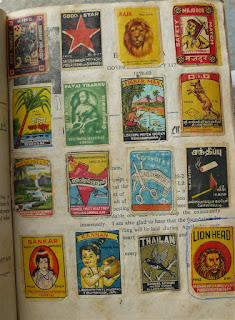The Kite Flying Festival is celebrated here on a certain day during Aashaada Maasa, which is in June-July. After June 21 Summer Solstice, winds are high. Many festivals that have been designed coincide with natural weather cycles. Kite flying was a very popular seasonal pastime in the 70s, than it is now, because more children enjoyed "trying to fly their kites". There were no kite-flying competitions like now, but it was the enthusiasm that filled that week. Preparing the kite was a major exercise.
Boys and girls would buy kites from petty shops that sold them for a meagre profit. There were cheap ones also that tore with the slightest touch, making it 'irrepairable'. I now wonder why they made such ones at all. It used to get torn in transit from our neighbouring 'Iyengar Stores' that was hardly 200 ft. away!! This shop mainly sold provisions and cigarettes but sold these cheap kites only in the season. The butter paper kites were slightly stronger and costlier. It was priced at 5 paise, medium sized, about 12"x12". They used bamboo ribs. I did not know there were stronger threads for kites. All I had known earlier was the sewing thread in our sewing machine! I would pester my mother to give a full reel of this and some torn sari for the 'tail'.
The knot in the thread had to be according to a certain formula. If there was a minor variation, the kite would crash! My street mate Ganapathi was very skilled in all these, including making his own kite. I tried to imitate him once, but failed! He was senior to me and I would envy his talent at that age. He would fly his kite from the street itself, despite all the electric cables whereas my kite flew 15-20 feet behind me as I ran to make my wind! Traffic was not an issue at all then. When I slowed, it would screech the road and tear! Ganapathi tried to teach me the 'knot formula'. But my kite would crash. Repairs were of no avail.
The only successful attempt in flying my kite was in my tenth or eleventh year. It was with skepticism I went to the field [where I would regularly play cricket long later] that evening, also carrying a 'success story' behind,of umpteen crashes and crashes only and of course the 'sprinting kite'! I had gone with a few of my street mates with kites. Wind was favourable. I asked a friend to hold my kite and walk back some distance as the thread unwound. When the wind was felt he released the kite. Presto, it was up in the air, the strong wind pulled it up. Soon, 'my kite' was among the many that were already high in the air. What a delight it was! It can be equated to flying an aeroplane at that age!
My reel ran out of thread with my kite at medium height, steady and sure! I could feel the kite's pull and how strong it was, like a dog in harness walked by the owner. I had to hold the reel firmly lest it slipped out and flew away. A few minutes later, unable to withstand the pull anymore, my sewing thread snapped, much to my shock. It was not a good sight to see my kite fly free with the breeze towards the Maharaja's College Campus. I ran behind in an attempt to retrieve it. It was a costly five-paise kite! It fell behind the bushes near the building. Just when I reached there, gasping, another boy who was there had picked up and bullied over me saying it was his and not mine! I surrendered and walked back sad faced.
Anyway, I had the satisfaction of flying it for a few minutes.
When I see someone flying their kite in the neighbourhood from their rooftops, I get into that nostalgia.
.JPG)
Spot the two kites happily up in the sky! We would envy those who could fly their kites vertical with that 'secret knot formula'!
.JPG)
A kite caught in the neighbour's tree after it had snapped like mine!
.JPG)
Another with the same fate.
I could never fly a kite, but I could spot flying kites!


































.JPG)















